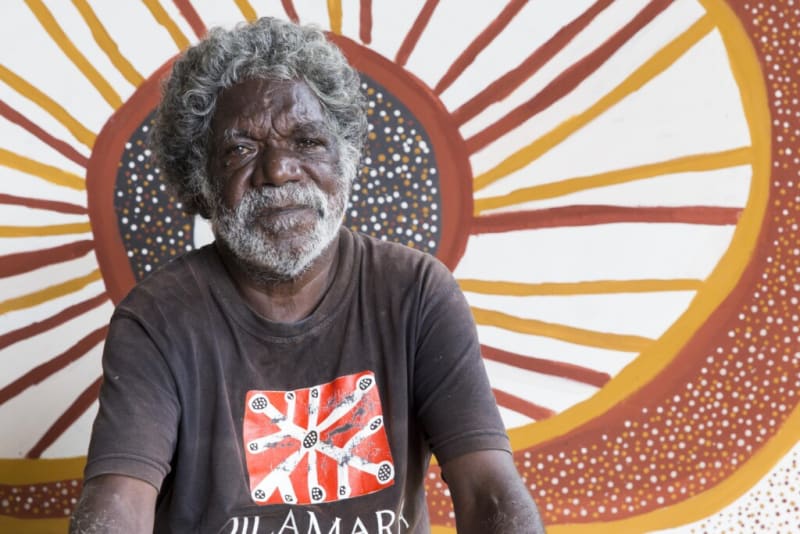“Cook’s paintings echo the inherited designs of the Tiwi (the parlini jilamara, or ‘old time designs’) but also reflect on motifs employed by the recognised Milikapiti artists of Melville Island." - Rose Vickers
Timothy Cook (born 1958, Marntupuni (House Fly)) is a Melville Island painter, sculptor, and graphic artist, whose distinctive works came to prominence from their first appearance in groups exhibitions from the late 1990s onwards. Since then, the artist held numerous solo exhibitions in Sydney, Melbourne, Perth, and Paris, and had his works included in important surveys at the Museum and Art Gallery of the Northern Territory, Museum fur Volkerkunde (Hamburg), QAGOMA, AGWA, the University of Queensland, GOMA Brisbane, the University of Melbourne, and numerous others. The artist was a regular finalist in the NAATSIAA, which he had won in 2012; a finalist in the AGNSW’s prestigious Wynne Prize and the King Wood Mallesons Contemporary First Nations Art Award. His works have been acquired by the National Gallery of Australia, National Gallery of Victoria and all state galleries of NSW, Queensland, South Australia, Western Australia, and the Northern Territory; Artbank; the Parliament Art Collection; numerous regional and tertiary collections; Aboriginal Art Museum in Utrecht, Musee du Quai Branly in Paris, as well as prominent corporate and private collections across Australia and abroad.
As stated by Rose Vickers, in her article on the artist for ‘Artist Profile’ magazine, “Cook’s paintings echo the inherited designs of the Tiwi (the parlini jilamara, or ‘old time designs’) but also reflect on motifs employed by the recognised Milikapiti artists of Melville Island. The Tiwi people reside across both the Melville and Bathurst Islands, as places shaped by two main cultural happenings: the mourning ceremony of pukumani, and the coming-of-age rituals of kulama (which also translates to ‘yam’). The kulama ceremony revolves around the moon and represents, in a more literal way, the landscape of the Tiwi region. Both ceremonies articulate certain metanarratives: death, mortality, maturity, memory.”

